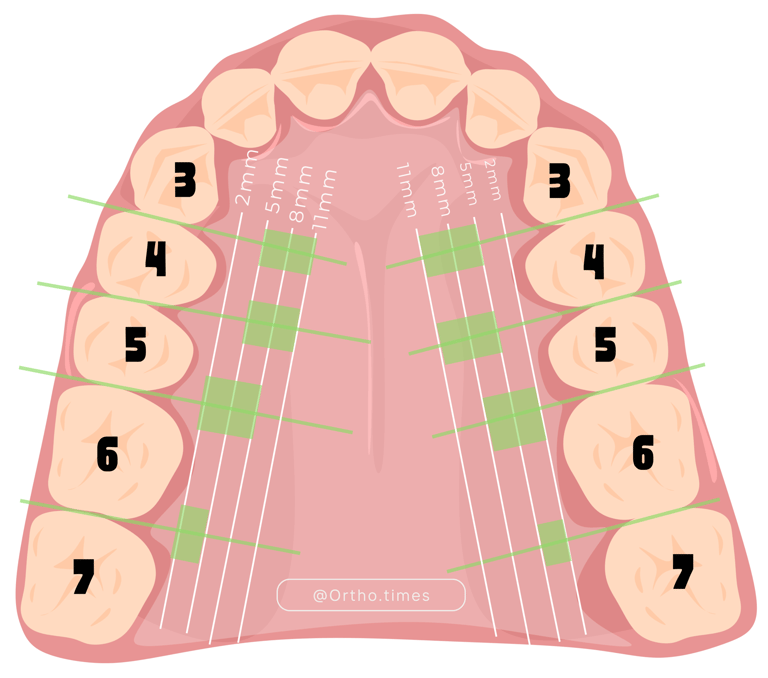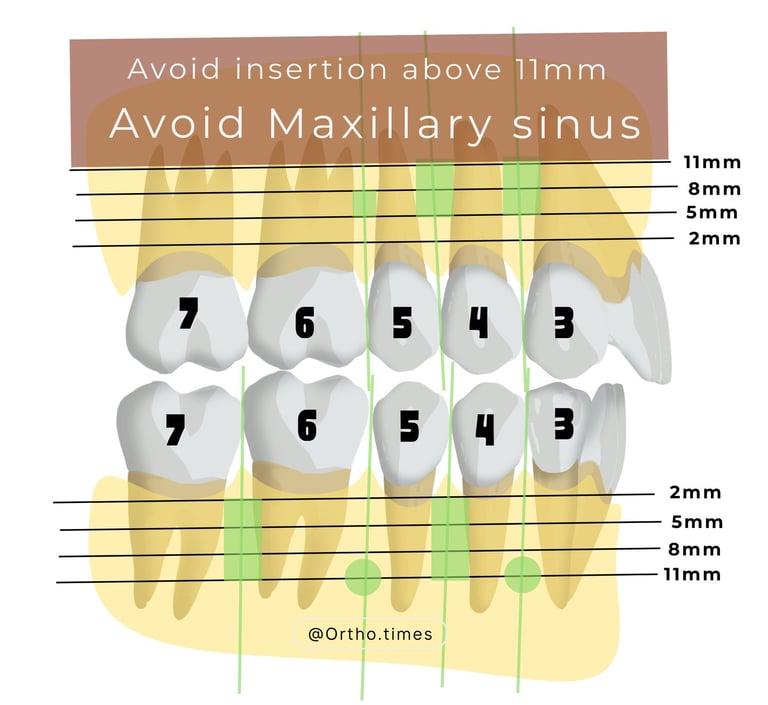Safe Zones for Miniscrew Placement: What Every Orthodontist Should Know
2 min read
In one of the most cited studies in orthodontics, Poggio et al. (2006) published “Safe Zones: A Guide for Miniscrew Positioning in the Maxillary and Mandibular Arch” . This landmark paper used cone-beam CT to identify precise locations in the upper and lower jaw where miniscrews can be safely inserted without harming roots or comprimising miniscrew stability.
Here’s a breakdown of the paper!
How was the study conducted?
Sample: 25 maxillae and 25 mandibles from healthy adults (20–40 years old).
Tool: NewTom DVT9000 CBCT scanner (cone-beam CT).
Measurements: Bone thickness was recorded at 2, 5, 8, and 11 mm from the alveolar crest in both mesiodistal and buccolingual directions.
What are the ideal dimensions and characteristics of a miniscrew based on this study?
Diameter: 1.2–1.5 mm (1.2 mm safest in tighter spaces)
Length: 6–8 mm
Shape: Conic design (reduces risk of root contact)
Angle of insertion: 30–40° to the tooth axis (allows deeper placement without contacting roots)
Where are the safest sites for miniscrew placement in the maxilla?
Palatal side (maxillary first molar and second premolar)Interradicular space 2 - 8 mm from alveolar crest
Palatal side (maxillary second and first molars)Interradicular space 2 - 5 mm from alveolar crest
Buccal or Palatal side (second and first premolars)Interradicular space 5 - 11 mm from alveolar crest
Buccal or Palatal side (first premolar and canine)Interradicular space 5 - 11 mm from alveolar crest
Buccal side (first molar and second premolar)Interradicular space 5 - 8 mm from alveolar crest
• "In the maxilla, the more anterior and the more apical, the safer the location becomes."
Which places to avoid ?
Avoid insertions above 8 - 11 mm in the maxillary molar region to stay clear of the maxillary sinus.
Avoid the tuberosity area due to minimal bone
What about the mandible?
"•Interradicular spaces between the second and first molar.
• Interradicular spaces between the second and first premolar.
• Interradicular spaces between the first molar and second premolar at 11 mm from alveolar crest.
• Interradicular spaces between the first premolar and canine at 11 mm from the alveolar crest."
The author also mentioned that ,the findings are evaluations of data from a group of nontreated patients. They serve as a guide for clinicians but do not eliminate the need for radiographic evaluation in each individual case before miniscrew insertion!
Safe Zones Map according to Poggio et al:




Reference:
‘‘Safe Zones’’: A Guide for Miniscrew Positioning in the Maxillary and Mandibular Arch (Paola Maria Poggio; Cristina Incorvatib; Stefano Velob; Aldo Carano)





